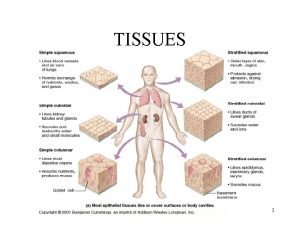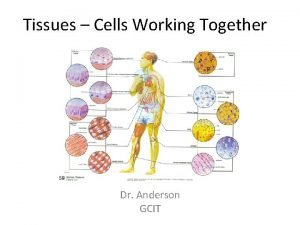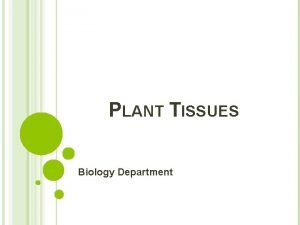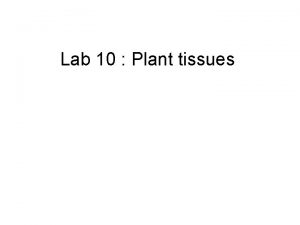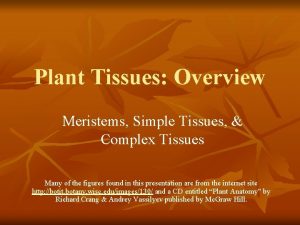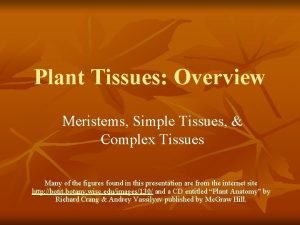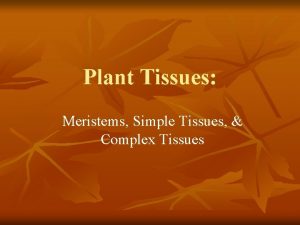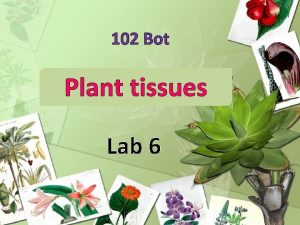4 4 PLANT TISSUES Working Together LEAVES Leaves








- Slides: 8

4. 4 PLANT TISSUES Working Together

LEAVES • Leaves are highly specialized structures with one primary function Photosynthesis: chlorophyll light energy + carbon dioxide + water glucose + oxygen • glucose produced can be converted into carbohydrates used as building blocks for plant’s structures and functions

Absorbing Light • Thin, wide leaves with large surface area absorb sunlight best • In the chloroplasts, Chlorophyll absorbs the light

• Chloroplasts are found in the palisade layer and the spongy mesophyll of a leaf • These are part of the ground tissue system • The tightly packed palisade layer capture the maximum amount of light while the loosely packed spongy mesophyll allow gases to move around (CO 2 & O 2)

Obtaining Carbon Dioxide • the epidermis of the leaf has cells that produce a thin layer of wax called the cuticle • The cuticle prevents water loss and the diffusion of gases from the surface of the leaf • Gases enter and leave through openings called the stomata which are found on the underside of the leaf • They are surrounded by special epidermal cells called the guard cells

Controlling Stomata • Guard cells around the stoma alter their shape to open and close • Stomata open to let CO 2 enter. • Stoma respond to the water level in the leaf • Good water supply they expand bend apart—open • Water shortage, they become soft and collapse—closed • Stomata close on sunny or windy days to prevent from drying out • Guard cells also respond to light levels and close at night when photosynthesis is not possible

Obtaining Water • root hairs: Long thin epidermal cells on the roots absorb water from the soil by osmosis • Root hairs increase the surface area for water absorption • Water is then transported up the from the roots through xylem to the stem and leaves

Comparing Plant & Animal Systems • Similarities • Vascular bundles are similar to veins and arteries • Differences • Animals actively use a heart to pump blood around organism • Plants passively acquire water and distribute it
 Tissues are groups of similar cells working together to:
Tissues are groups of similar cells working together to: Tissues are groups of similar cells working together to
Tissues are groups of similar cells working together to Tissues are groups of similar cells working together to
Tissues are groups of similar cells working together to Tissues working together
Tissues working together Body tissues chapter 3 cells and tissues
Body tissues chapter 3 cells and tissues Cells form tissues. tissues form __________.
Cells form tissues. tissues form __________. Body tissues chapter 3 cells and tissues
Body tissues chapter 3 cells and tissues Chapter 3 cells and tissues
Chapter 3 cells and tissues Four major tissue types
Four major tissue types


